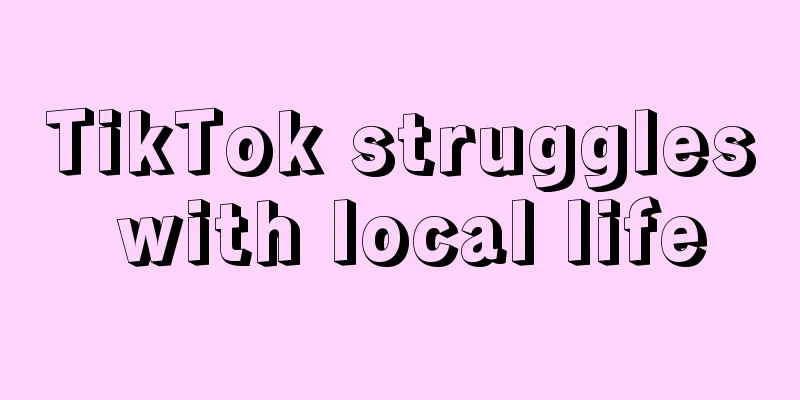Will the UP host and Bilibili "die together"?

The "stop-update trend" among Bilibili creators is obviously not accidental, but a concentrated outbreak of Bilibili's long-term operational problems. Bilibili does not neglect creators. After all, the healthy interaction between creators and audiences is the basic guarantee for the vitality of UGC content platforms. Creators are the supply side of content and play the role of constantly activating the platform ecology and strengthening the platform value and culture. But the problem is that Bilibili’s business management capabilities cannot support it to serve creators well, which leads to Bilibili always being on the hot search list because of conflicts among creators. The problems at B Station did not arise overnight, but were the result of multiple decision-making errors and delays over a long period of time, which basically reflects the shortcomings of B Station's strategic capabilities. When the contradictions accumulated to a certain extent, they were manifested in a concentrated form, and a "stop-update trend" broke out in a mutually destructive manner. 1. Bilibili’s content ecosystem operation system has not been successfulAccording to Uncle Chen Rui's widely circulated statement a few years ago, a small country with a small population cannot defeat strong ships and powerful guns, so Bilibili started the transformation from "small and beautiful" to "big and strong", and became aggressive in both marketing and investment layout. However, the transformation from "small and beautiful" to "big and strong" requires Bilibili to make corresponding adjustments in its organizational capabilities and business model, not just to increase its size and number of users. In fact, the expansion of scale requires a series of system support, and the relationship between them is often not linear. Doubling the scale often requires not doubling the organizational capacity, but perhaps 1.15 times, because the expansion of scale will lead to many complex problems, requiring more than double the organizational capacity and requiring many node redundancies. Theoretical physicist West once made a brilliant discussion in his book "Scale", pointing out that everything cannot be simply scaled linearly in equal proportions. The process of growing from small to large is actually also a process of reshaping the platform's operating rules. These operating rules and experiences can be said to be the know-how of community platform operations. However, as it stands now, Bilibili has not been able to build up the operational capabilities to adapt to a "large community." From the perspective of creator operations at Station B, Communication Gymnastics believes that: In the "small but beautiful" state, the creative motivation of UP masters can be effectively compensated by the cultural identity of the community, and the stickiness between excellent creators and loyal audiences is also stronger. UP masters have a psychological satisfaction of being "leaders" in vertical circles, which has also spawned a group of UP masters who "do it for love". Overall, in a "small but beautiful" platform, the creative motivation of UP masters lies in "fame" and the psychological satisfaction brought by fame. However, in the "big and strong" state, as the community culture is diluted by outsiders who break the circle, the stickiness between excellent creators and loyal audiences is also weakening. At the same time, the introduction of a large amount of diversified content and new creators has also made content creation begin to move towards traffic logic, and has given rise to negative phenomena such as "bad money drives out good money". Individual UP hosts find it difficult to obtain sufficient psychological compensation and naturally need to pursue commercial interests. Creators who "generate electricity for love" have become a minority. In general, on a “big and powerful” platform, the creative motivation of UP masters lies in “profit”. Commercial calculations become the driving force for long-term creation, and “generating electricity for love” cannot be sustained. The platform can also effectively regulate the creative motivation of creators by adjusting the distribution of commercial benefits. Obviously, Bilibili has completed the large-scale expansion of traffic and user numbers, and on the surface it appears to have become a "big and strong" long-video content community, but it has not built a creator incentive system that is compatible with it, and it is difficult to meet the interests of UP masters in terms of creator incentives. At the same time, in the content ecology and content community operations, there are also a series of criticisms such as the dilution of community culture and the intrusion of short videos. There have been many examples of the mismatch between the scale and capabilities of Station B in the past few years. We can also see the embarrassment of Station B from the financial data alone. According to the 2022 financial report data, Station B lost 7.5 billion last year, an increase of 10.4% year-on-year. As the UP host group expands, Station B's expenses for incentivizing content creation continue to be stretched. 2. Creators’ “involution” reduces the efficiency of content platformsThe fundamental reason why the creative incentives have not been raised is the lack of commercialization capabilities of Bilibili and the outdated community operation ideas. However, the shortcomings of creative incentives have led UP hosts to collectively fall into creative involution. I believe everyone knows that compared to platforms such as WeChat/TikTok/Xiaohongshu/Zhihu, Bilibili UP hosts may be the most thankless group among self-media creators. On the one hand, the creation of long video content itself is extremely energy-consuming, and before demonstrating commercial value, there needs to be a long-term pure investment stage for love; on the other hand, long video content is extremely inward-looking, and the "arms race" phenomenon among creators is serious, which further leads to the mismatch between the input-output ratio of creators; at the same time, it is also due to the platform's own traffic distribution rules. In short, the content characteristics of long videos, the large number of people and small number of resources on the platform, and the traffic rules issues have jointly led to the "involution" of UP masters. From the audience's perspective, creators' internal circulation can provide users with better-quality content, but just like the combined outcome of the taxi-hailing industry and the bike-sharing war, high-intensity internal circulation does not conform to business laws and may eventually lead to a collapse. In fact, "involution" itself will lead to inefficient consumption of resources in the entire ecosystem. For example, in a forest, each tree will continue to grow taller in order to obtain more sunlight, thereby consuming more nutrients and energy in the system until the equilibrium limit is reached. This is actually the result of excessive competition, which conforms to the natural law of survival of the fittest, but is not the optimal economic solution. Back to the creation of long videos, excessive involution will lead to meaningless waste of creators' energy. The "arms race" of content creation has deviated from user demand orientation and has become creator survival orientation. Creators need to surpass their competitors, regardless of whether the content is what users need. This brings up a key issue in content ecosystem operations - appropriate content creation competition can provide users with better content and promote the survival of the fittest in terms of content quality, but excessive content creation competition will gradually cause the platform's content orientation to deviate from user needs, thereby reducing the platform's overall content creation efficiency. In fact, in many vertical content fields, there is a niche market state - the user demand space is limited, and there is no need for too many top creators to participate in the competition. Excessive competition will overdraw the creative enthusiasm of creators. However, due to the particularity of the content field, the resource competition barriers of top creators can be replaced by the consumption of individual time and energy, resulting in a large number of creators pouring in with heavy investments, but ultimately not getting the corresponding returns and returning empty-handed. The overall trend of "hardcore" video content on Bilibili may come from the rise of hardcore financial UP hosts such as "Wizard Finance", and Bilibili has subsequently spread its new positioning - "a learning website". However, Communication Gymnastics believes that both "hardcore" and "learning" content will further damage the overall content ecology of Bilibili. The imbalance in market supply and demand for hardcore content will naturally squeeze out a large number of UP hosts, making it more difficult for UP hosts to gain recognition and worsening the content ecology. In other words, we believe that the shift in B Station’s brand positioning to a “learning website” ultimately led to the continuous deterioration of the content ecology, and behind this is B Station’s misjudgment of user needs and the direction of the content industry. In the later period, the brand positioning and strategy of Bilibili were vague, which led to complaints from users about "TikTok-ization" and "information flow". Obviously, "TikTok-ization" is not very compatible with the brand positioning of "learning website", and short videos have introduced the trend of focusing on traffic, cover parties, and title parties to the Bilibili platform. Perhaps due to the lack of a clear brand strategy and determination, the content ecology of Bilibili has become a "four-in-one" at present. 3. The commercial value of the community is not recognized by advertisersWhen "The Next Wave" broke the circle, Bilibili became a hot commodity in the capital market, focusing on concepts for young people, which made the market imagine the future of Bilibili. But if we change to a macro perspective, we can find that the high valuation and popularity of Bilibili at that time actually came from the excess liquidity in the financial market. With the tightening of the global monetary environment and the advent of the interest rate hike cycle, the same concept of young people and traffic failed to convince the market, leading to the bursting of the Bilibili bubble. Perhaps the problem with Bilibili is that it regards the macro trend as its own strength and tries too hard to promote its own concept to the capital market. From the perspective of the advertising business, the concept of young people itself has its inherent flaws, because young people themselves have low purchasing power and have not formed specific brand loyalty. It takes a very long period to cultivate brand loyalty among young people. "Young people" actually refers to a relatively incremental market. When the economic situation is good, advertising targeting young people can be seen as having unlimited potential. However, when the economic situation is volatile, advertising targeting young people cannot effectively and quickly achieve brand loyalty. However, the long video community feature of Bilibili ultimately failed to open up the entire chain of brand marketing and was limited to the product promotion level. A large number of brand placements could not be measured by conversion effects and were at most insignificant publicity, which made a large number of small and medium-sized enterprises lose interest in marketing. WeChat can effectively build private domain traffic, Douyin not only has large traffic but also has obvious merchandising attributes, and Xiaohongshu can also effectively drive e-commerce keywords. In an environment where companies have to reduce costs and increase efficiency, product promotion advertising such as that on Bilibili is the first budget segment that should be cut by companies. So, it seems that the commercialization problem of Bilibili lies in macro fluctuations, but the underlying reason is that Bilibili has not built a set of marketing closed-loop links and logic, which has led to Bilibili's inability to become an important marketing position for advertisers. This also makes it impossible for UP hosts to receive enough promotion orders, further exacerbating the platform problem. It can be seen that the problem of B Station is a systemic problem. It is not that solving any one point will improve the current situation of B Station. Even if the economic situation improves infinitely, B Station's shortcomings in the operating system, unclear brand strategy, and lack of marketing links will require great efforts to promote changes. In short, there are three problems that Station B needs to solve:
At least for now, Bilibili has not given any convincing answers to these three questions. Author: Source: WeChat public account "Spread Gymnastics (ID: chuanboticao)" |
>>: Good ideas = the best moment
Recommend
The longest Double 11 in history, the e-commerce war enters a new stage
This year's Double 11 Shopping Festival not on...
How do convenience stores, supermarkets, department stores, outlets, e-commerce and other retail formats leverage the membership economy?
In the fierce market competition of the retail ind...
How many items should Lazada put on the shelves every day? How does Lazada operate?
As we all know, there are more and more merchants ...
Ask AI, how did I do it?
AI conversations are completely different from hum...
Can Amazon Japan ship directly to China? How many days does it take to arrive?
If you shop overseas frequently, you will most lik...
How long does it take for Amazon to review? Can I pass the second review?
Amazon Global Selling sells products all over the ...
Which platform is suitable for beginners to engage in cross-border e-commerce?
Now many people want to do cross-border e-commerce...
Is cross-border e-commerce a marketing tool? What does cross-border e-commerce mean?
With the rapid development of globalization and th...
With the double buffs of “peak season + free”, why are Cudi’s sales still not ideal?
This article deeply analyzes the challenges faced ...
What is the difference between graduating and not graduating from Shopee? What are the impacts?
The Shopee platform has a new store incubation per...
The “essence” of brand content marketing
In the field of corporate self-media, most brands&...
Real opportunities and strategic analysis of the consumer industry in 2023
The analysis of the consumer industry on the marke...
In-depth Insight | The Dilemma of Private Domain Traffic
This article will deeply analyze the root causes a...
These 27 types of content on Video Account will be restricted, so don’t post them anymore!
Understanding what content will trigger these rest...
What are the after-sales skills for Amazon e-commerce operations? Tips sharing
In addition to controlling the quality of products...









